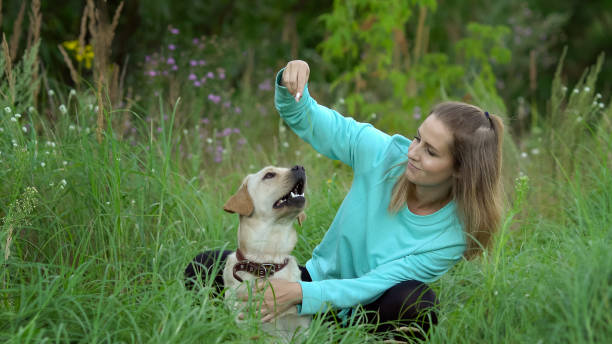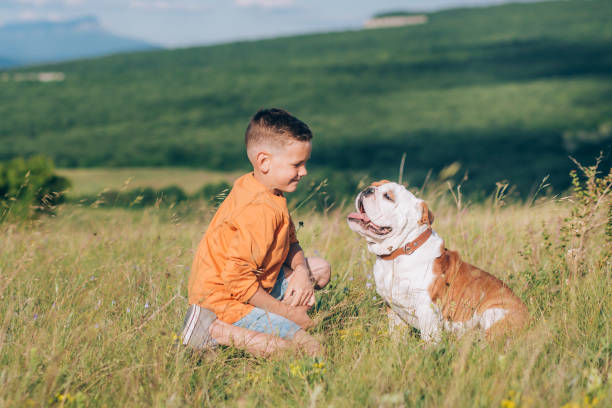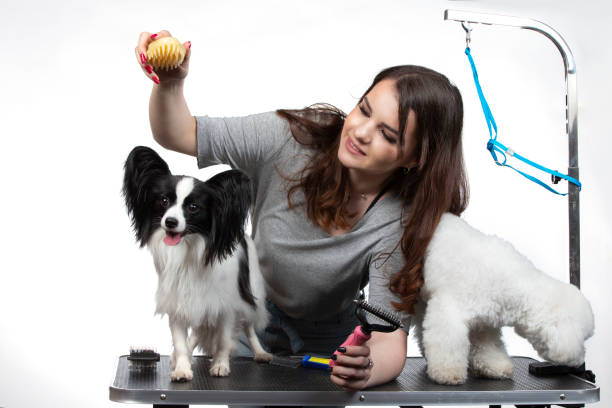The Benefits of Positive Reinforcement Training For Dogs
Positive reinforcement training focuses on rewarding the desired behaviour rather than punishing the unwanted behaviour. It also involves using a reward system, such as food, verbal praise and playtime.
This method is very effective for teaching dogs new commands, tricks and eliminating unwanted behaviours. It also creates a more trusting and stronger bond between the dog and owner.
1. Increases the bond between you and your dog
Positive reinforcement training is non-confrontational, meaning you don’t physically force your dog to do anything. Instead, the dog decides what to do based on the rewards he gets, without being pushed or pulled. This helps to build trust and ensures your dog feels secure and comfortable around you.
It also eliminates the need to punish unwanted behaviors, such as barking at guests entering your home. This type of negative reinforcement can cause a loss of trust and fear in your dog, which isn’t what you want. Instead, you can use positive reinforcement to redirect your dog’s attention towards the behavior you do want him to engage in, such as sitting when he sees someone arriving.

You can use a variety of rewards to encourage your dog to behave in a desirable way, including treats, verbal praise, playtime, and toys. It is important to be consistent in your training sessions, and to remember that every time you reward good behavior, you are adding money to the relationship piggy bank. You can also use a clicker to mark the behavior, which is an effective secondary reinforcer.
2. Increases your bond with your dog
Using positive reinforcement training, you can build trust with your dog. Your dog learns what you want them to do and they offer those behaviours in the hope of getting rewards. This means that they are less likely to act out of fear or out of frustration. This can increase the longevity of skills taught and reduces problem behaviours such as attention-seeking, barking and aggression.
Positive Reinforcement – This method involves adding something your dog likes (the reward) to increase the frequency of a desired behavior. For example, rewarding your dog with a treat when they sit will make them sit more often. Food is usually the most popular reward but can also be toys, petting, verbal praise or access to a favourite walking spot.
Negative Reinforcement – This method uses something your dog dislikes (the punishment) to decrease the frequency of an undesired behavior.
3. Increases your dog’s self-esteem
In addition to teaching your dog new behaviors and tricks, positive reinforcement training also helps build their confidence. It’s all about helping them feel safe and secure in the world around them, which is a lot easier when they can be trusted to make the right choices.
Using positive reinforcement techniques, trainers help dogs learn that the things they do that earn them rewards (like sitting and staying calm), while not rewarding those behaviors that are unwanted (like jumping up). This means that the unwanted behavior will naturally drift away as the dog learns that their choice to jump isn’t rewarded or appreciated.

Positive training also involves desensitization, which is the process of slowly exposing your dog to things that scare them. This is done in a controlled environment and only when the dog shows that they can remain calm around the scary thing. If the dog shows that they can’t, then they are likely ‘over threshold’ and need to pause the exercise. The trainer will then try something else that is more manageable for them.
4. Increases your dog’s obedience
In addition to teaching obedience commands, positive reinforcement training also helps you better understand your dog’s body language and improve your pet’s attention-seeking behaviours and fear responses. This is important in preventing unwanted behaviours from developing, which can often be more difficult to change than desired ones.
To successfully train using positive reinforcement, you must first determine what motivates your dog the most. For most dogs this will be food. Food can be in the form of a small treat, a toy, playtime with their guardian or access to something they love, such as playing outside or going for a walk.

Using food as a reward in the beginning will allow you to see immediate results. However, you must be careful not to inadvertently reward a dog’s undesired behavior. Many people think they are disciplining a dog by scolding them or ignoring them when they bark at a neighbor’s cat, but this actually reinforces the barking.
5. Increases your dog’s social skills
It teaches your dog that good things happen when they behave the way you want them to. If they raise their paw and get a treat, for example, they will be more likely to do that again in the future.
This type of training is based on the principles of operant conditioning, which means that behavior changes based on the consequences of that behavior. If your dog is doing something that you don’t want them to, you can change the outcome of that behavior by either adding something (a reward) or taking away something (a punishment).
Positive reinforcement is also a great tool for teaching dogs basic commands and tricks. By using high-value treats and verbal praise, you can train your dog to do a wide range of behaviors. This type of training also helps to build trust between you and your pet, which can lead to a stronger human-animal bond. Additionally, positive reinforcement training can help to reduce unwanted behavior, such as attention-seeking, fearfulness and aggression. A confident, active-thinking dog is much less likely to engage in problem behaviors and may need less attention from you than a nervous, untrusting dog.

